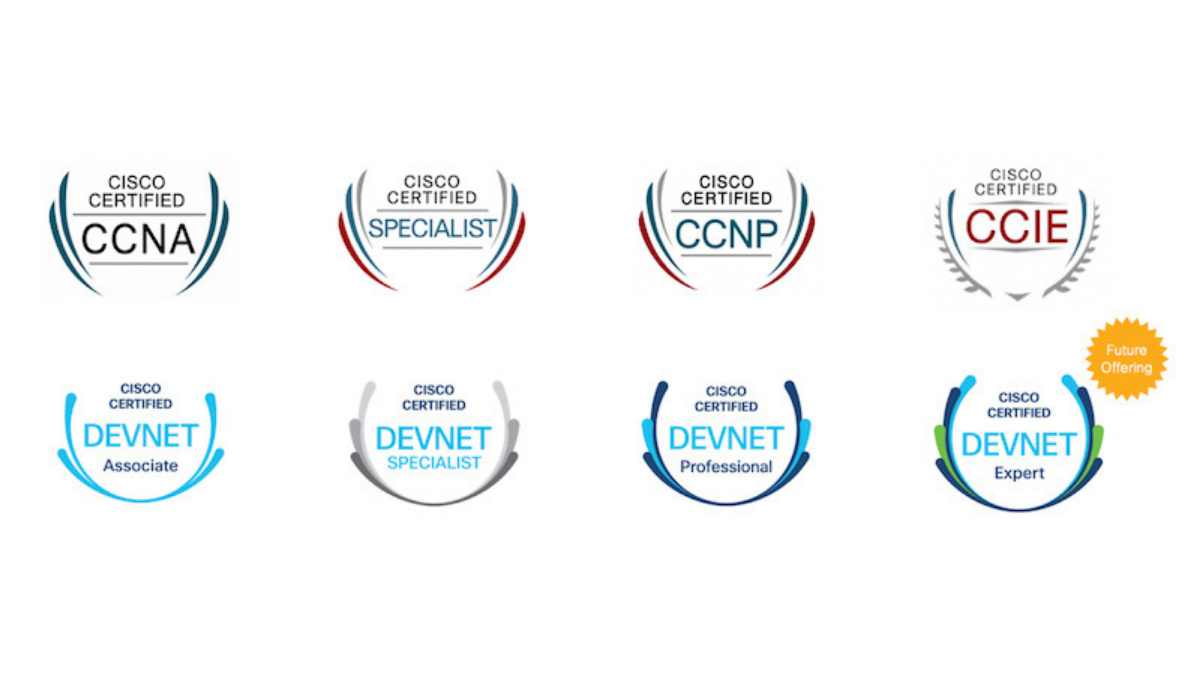Description
Configuring BGP on Cisco Routers (BGP) v4.0 provides students with in-depth knowledge of Border Gateway Protocol (BGP), the routing protocol that is one of the foundations of the Internet and New World technologies such as Multiprotocol Label Switching (MPLS).
This curriculum covers the theory of BGP, configuration of BGP on Cisco IOS routers, detailed troubleshooting information, and hands-on exercises that provide learners with the skills that they need to configure and troubleshoot BGP networks in customer environments. Different service solutions in the curriculum cover BGP network design issues and usage rules for various BGP features, preparing learners to design and implement efficient, optimal, and trouble free BGP networks.
What’s included?
- Authorized Courseware
- Intensive Hands on Skills Development with an Experienced Subject Matter Expert
- Hands on practice on real Servers and extended lab support 1.800.482.3172
- Examination Vouchers & Onsite Certification Testing- (excluding Adobe and PMP Boot Camps)
- Academy Code of Honor: Test Pass Guarantee
- Optional: Package for Hotel Accommodations, Lunch and Transportation
Training Solutions
With several convenient training delivery methods offered, The Academy makes getting the training you need easy. Whether you prefer to learn in a classroom or an online live learning virtual environment, training videos hosted online, and private group classes hosted at your site. We offer expert instruction to individuals, government agencies, non-profits, and corporations. Our live classes, on-sites, and online training videos all feature certified instructors who teach a detailed curriculum and share their expertise and insights with trainees. No matter how you prefer to receive the training, you can count on The Academy for an engaging and effective learning experience.
Methods
- Instructor-Led (the best training format we offer)
- Live Online Classroom – Online Instructor-Led
- Self-Paced Video
Speak to an Admissions Representative for complete details
| Start | Finish | Public Price | Public Enroll | Private Price | Private Enroll |
|---|---|---|---|---|---|
| 5/12/2025 | 5/16/2025 | ||||
| 6/2/2025 | 6/6/2025 | ||||
| 6/23/2025 | 6/27/2025 | ||||
| 7/14/2025 | 7/18/2025 | ||||
| 8/4/2025 | 8/8/2025 | ||||
| 8/25/2025 | 8/29/2025 | ||||
| 9/15/2025 | 9/19/2025 | ||||
| 10/6/2025 | 10/10/2025 | ||||
| 10/27/2025 | 10/31/2025 | ||||
| 11/17/2025 | 11/21/2025 | ||||
| 12/8/2025 | 12/12/2025 | ||||
| 12/29/2025 | 1/2/2026 |
Curriculum
Module 1: BGP Overview
- Lesson 1: Introducing BGP
- Lesson 2: Understanding BGP Path Attributes
- Lesson 3: Establishing BGP Sessions
- Lesson 4: Processing BGP Route
- Lesson 5: Configuring Basic BGP
- Lesson 6: Monitoring and Troubleshooting BGP
- Lesson 7: Module Summary
- Lesson 8: Module Self-Check
Module 2: BGP Transit Autonomous Systems
- Lesson 1: Working with Transit AS
- Lesson 2: Interacting with IBGP and EBGP in Transit AS
- Lesson 3: Forwarding Packets in Transit AS
- Lesson 4: Monitoring and Troubleshooting IBGP in Transit AS
- Lesson 5: Module Summary
- Lesson 6: Module Self-Check
Module 3: Route Selection Using Policy Controls
- Lesson 1: Using Multihomed BGP Networks
- Lesson 2: Employing AS Path Filters
- Lesson 3: Filtering with Prefix Lists
- Lesson 4: Using Outbound Route Filtering
- Lesson 5: Applying Route Maps as BGP Filters
- Lesson 6: Implementing Changes in BGP Policy
- Lesson 7: Module Summary
- Lesson 8: Module Self-Check
Module 4: Route Selection Using Attributes
- Lesson 1: Influencing BGP Route Selection with Weights
- Lesson 2: Setting BGP Local Preference
- Lesson 3: Using AS Path Prepending
- Lesson 4: Understanding BGP Multi-Exit Discriminators
- Lesson 5: Addressing BGP Communities
- Lesson 6: Module Summary
- Lesson 7: Module Self-Check
Module 5: Customer-to-Provider Connectivity with BGP
- Lesson 1: Understanding Customer-to-Provider Connectivity
- Lesson 2: Implementing Customer Connectivity Using Static Routing
- Lesson 3: Connecting a Customer to a Single Service Provider
- Lesson 4: Connecting a Multihomed Customer to Multiple Service Providers
- Lesson 5: Module Summary
- Lesson 6: Module Self-Check
Module 6: Scaling Service Provider Networks
- Lesson 1: Scaling IGP and BGP in Service Provider Networks
- Lesson 2: Introducing and Designing Route Reflectors
- Lesson 3: Configuring and Monitoring Route Reflectors
- Lesson 4: Module Summary
- Lesson 5: Module Self-Check
Module 7: Optimizing BGP Scalability
- Lesson 1: Improving BGP Convergence
- Lesson 2: Limiting the Number of Prefixes Received from a BGP Neighbor
- Lesson 3: Implementing BGP Peer Groups
- Lesson 4: Using BGP Route Dampening
- Lesson 5: Module Summary
- Lesson 6: Module Self-Check
- LABS:Discovery 1: Configure Basic BGP
- Discovery 2: Announcing Networks in BGP
- Discovery 3: Implement BGP TTL Security Check
- Discovery 4: BGP Route Propagation
- Discovery 5: IBGP Full Mesh
- Discovery 6: BGP Administrative Distance
- Discovery 7: Configure Non-Transit Autonomous System
- Discovery 8: Filtering Customer Prefixes
- Discovery 9: Prefix-Based Outbound Route Filtering
- Discovery 10: Configure Route Maps as BGP Filters
- Discovery 11: Configure Per-Neighbor Weights
- Discovery 12: Configure and Monitor Local Preference
- Discovery 13: Configure Local Preference Using Route Maps
- Discovery 14: Configure AS Path Prepending
- Discovery 15: Configure MED
- Discovery 16: Configure Local Preference Using the Communities
- Discovery 17: Configure Route Reflector
- Discovery 18: Configure BGP Route Limiting
- Discovery 19: Configure BGP Peer Groups
- Discovery 20: Configure BGP Route Dampening
- Challenge 1: Configure a Basic BGP Network
- Challenge 2: Configure a BGP Transit AS
- Challenge 3: Configure BGP Using BGP Filtering
- Challenge 4: Configure BGP Route Selection Using BGP Attributes
- Challenge 5: Configure BGP Route Reflectors


